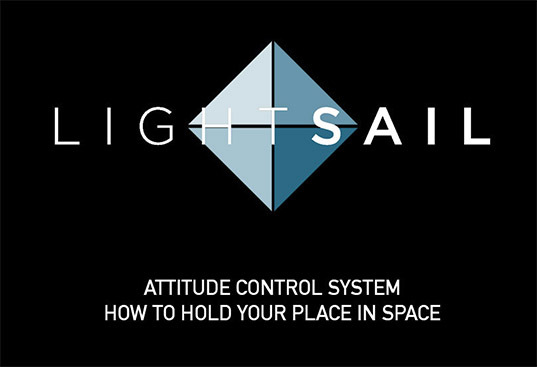Jason Davis • Feb 20, 2015
How LightSail Holds Its Place in Space
There are few systems aboard a spacecraft more important than attitude control. Most things in space need the ability to point toward other things in space. The Hubble Space Telescope locks on to distant celestial objects. Earth-observing satellites focus on our planet. And a Soyuz capsule lines itself up with the International Space Station before pulling in to a docking port.
For CubeSats, it's no different. And while some of these tiny spacecraft tumble aimelessly around the Earth, others hold their positions using momentum wheels and electromagnetic torque rods. For our full-fledged solar sail flight in 2016, we'll tack LightSail like a sailboat on a lake, alternately turning parallel and perpendicular to the ceaselss stream of solar photons.
Our first LightSail spacecraft, which will ride an Atlas V rocket to orbit this May, won't fly high enough to solar sail. But we still need a way to hold a stable position in orbit. We do this using torque rods that interact with Earth's magnetic field. This also gives us a way to predict LightSail's orientation at any given point.
If that sounds confusing or jargon-laced, the following infographic is for you. Click the image below to head over to our new LightSail website, and see how the spacecraft's attitude control system holds its place in space.
Let’s Go Beyond The Horizon
Every success in space exploration is the result of the community of space enthusiasts, like you, who believe it is important. You can help usher in the next great era of space exploration with your gift today.
Donate Today

 Explore Worlds
Explore Worlds Find Life
Find Life Defend Earth
Defend Earth


